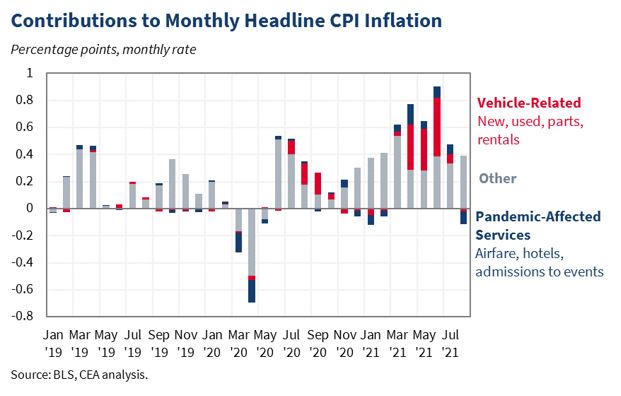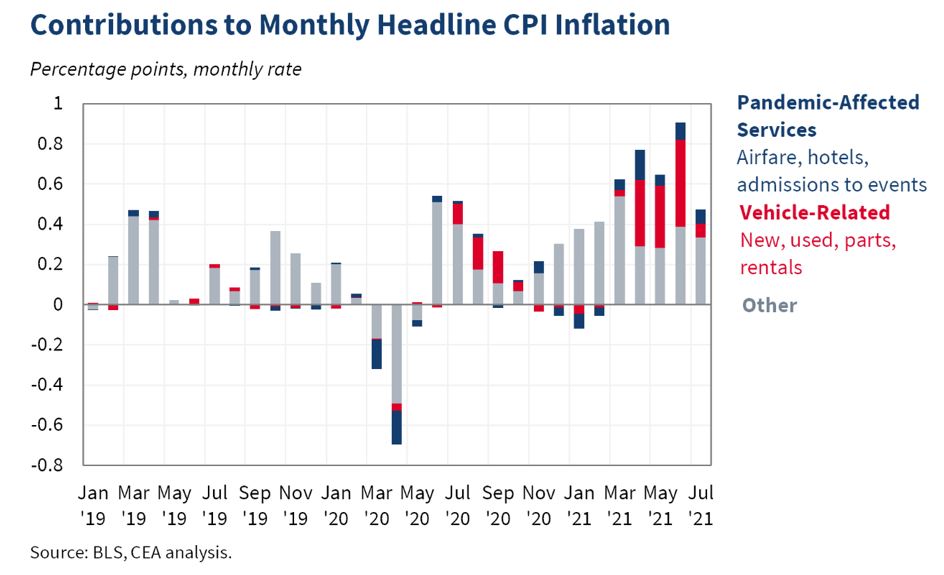
The infrastructure and Build Back Better plans are designed to be long-term packages that increase the capacity of the economy through investments in physical infrastructure, human capital, clean energy, housing, and health care. 1/
Such investments, as discussed in CEA’s latest blog, should be expected to have little effect on inflationary pressures in the short-term and ease such pressures over the long term. 2/ whitehouse.gov/cea/blog/2021/…
Other factors that push against the inflationary effects of these plans include the sharp reversal of fiscal impulse, as well as the plans’ payfors. 3/
As spending from the ARP and earlier relief packages ramp down, fiscal impulse (basically, the change in the primary deficit) is about to go from strong positive to significant negative. 4/
That will be true even including the new spending from the two plans now under Congressional consideration. 5/
Our estimate is that positive Federal fiscal support came to 10 percentage points of GDP in 2020 and 2 percentage points in 2021. 6/ 

But in 2022 under current law, support will flip to 9 percentage points of drag, the largest fiscal headwind since the demobilization from World War II in 1946. 7/
This means that those raising the possibility of overheating of the economy (which would generate inflation) must recognize that even with the new plans, fiscal policy will likely be a relative drag on growth next year, even as forecasts predict above-trend growth in ’22. 8/
Depending on when these plans pass, they will start creating good jobs right out of the gate—hopefully beginning later this year and early next year. 9/
But, the fact that they ramp up over time and spend out over a decade must be factored into any assessment of the near-term heat these plans will generate. 10/
The longer timeline of infrastructure spending, as well as the fact that the infrastructure and BBB plans are paid for through revenue increases and spending cuts, mean that these plans generate less deficit spending than would otherwise occur. 11/
This would, in turn, facilitate the shift from positive to negative in fiscal impulse. 12/
Unlike the primarily (though not exclusively) temporary, “demand-side” measures in the ARP, most measures in the infrastructure and BBB plans aim to more permanently boost what economists call the economy’s “capacity,” or “supply-side.” 13/
One key benefit of larger capacity is lower inflationary pressure: as economic capacity builds, cost pressures are less binding on firms making new goods and services, and price pressures gradually ease. 14/
When we account for fiscal impulse, spend-out timing, new revenue, and the boosts to the economy’s supply-side, the economics behind these plans suggest these types of investments can be economically beneficial. end/
• • •
Missing some Tweet in this thread? You can try to
force a refresh






